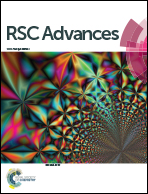Biosorption and biodegradation of polyacrylate/nano-ZnO leather finishing agent and toxic effect on activated sludge
Abstract
The removal of polyacrylate/nano-ZnO (PA/ZnO) from water by simultaneous biosorption and biodegradation was investigated using an activated sludge (AS) unit. About 90.9%, 93.2% and 95.1% of the total PA/ZnO was removed when the AS biomasses were 2.5, 5.0 and 10.0 g, respectively. The removal efficiency increases with the increase of initial AS concentration. More than 74.5% of the total PA/ZnO was removed in the first day, implying that biosorption was the dominant removal route. The adsorption process fitted well to the Langmuir model rather than Freundlich model. Kinetics data showed better correlation with pseudo-second order than pseudo-first order models. PA/ZnO also exhibited certain biodegradability in the activated sludge reactor. Biodegradation mechanisms of PA/ZnO were studied by Fourier transform infrared spectroscopy (FT-IR), scanning electron microscopy (SEM), energy dispersive X-ray spectroscopy (EDS), and gel permeation chromatography (GPC). The results showed that the biodegradation process occurs in the AS microorganisms mainly though chain scission. Microbial community analysis by 16S rRNA based PCR-DGGE revealed little shift in the community structure and diversity, suggesting that PA/ZnO exhibits little toxicity to microorganisms.


 Please wait while we load your content...
Please wait while we load your content...